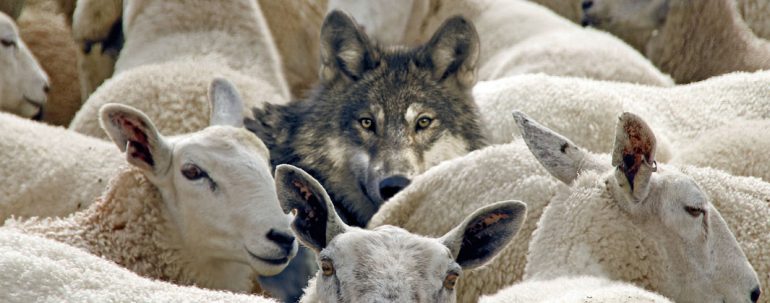A master’s thesis presented in May by Elizabeth Matseur of the University of Columbia-Missouri estimated a population of 2,920 black-backed woodpeckers in the Black Hills in 2015, and 3,439 in 2016.
Those numbers are about three to four times higher than the estimate included in a still-pending 2012 petition to list the birds as a threatened or endangered species.
Seth Tupper
With a decision forthcoming on proposed protections for a rare species of woodpecker found in the Black Hills, a new population estimate for the bird has provoked warring reactions from opposing sides of the debate.
A master’s thesis presented in May by Elizabeth Matseur of the University of Columbia-Missouri estimated a population of 2,920 black-backed woodpeckers in the Black Hills in 2015, and 3,439 in 2016.
Those numbers are about three to four times higher than the estimate included in a still-pending 2012 petition to list the birds as a threatened or endangered species.
The petition was submitted by four environmental and conservation groups. A decision is required by Sept. 30 from the director of the U.S. Fish and Wildlife Service, in cooperation with the secretary of the Department of the Interior.
A Black Hills timber industry group opposes the listing because it could result in more protected habitat for the birds, and therefore reduced logging, in the Black Hills National Forest.
Ben Wudtke, forest programs manager for the Black Hills Forest Resource Association, said the new research disproves the case for listing the birds as threatened or endangered.
“This study should put the final nail in the coffin and show that black-backed woodpeckers are doing very well in the Black Hills,” Wudtke said.
Chad Hanson, a representative from one of the groups that submitted the petition, said that simply is not true because the student researcher’s findings are fundamentally flawed.
Hanson is an ecologist for the John Muir Project of Earth Island Institute in Big Bear City, Calif. He said the new research has “one major flaw” — a buffer area of 500 meters between sites where birds were counted, rather than 1,500 meters, which Hanson said is the appropriate standard.
“To avoid overcounting, you have to take that into account,” Hanson said. “They would’ve counted some birds not just twice, but with a 500-meter buffer, they very likely would’ve counted some birds three times or more.”
In other words, Hanson thinks the population estimates in the new research might be inflated by a factor of three. But even if the new estimates are accurate, he said, they still fall below the threshold of 4,000 individual birds that the petition cites as necessary to avoid a risk of extinction.
Matseur, the author of the thesis, said she and her collaborators accounted for the likelihood of individual birds being counted more than once.
“We feel this is an accurate model and population estimate,” Matseur said.
The research was sought by the U.S. Forest Service’s Rocky Mountain Research Station, which provided support for the work along with partners including state government agencies in South Dakota and Wyoming, Matseur said.
Matseur and a crew of up to five helpers spent the summers of 2015 and 2016 doing a combined 1,800 miles of off-trail hiking in the Black Hills. They followed predetermined routes and stopped for five minutes apiece at predetermined points to watch and listen for black-backed woodpeckers. Each detection point was visited three times per summer.
[wp_ad_camp_2]
In all, the team made 7,110 stops at the detection points and logged 362 detections of black-backed woodpeckers.
“Sometimes we would go a week without detecting a woodpecker,” Matseur said, “but that made it more exciting when we got one.”
Matseur and her team put their data into a statistical model that included additional factors, such as forest conditions, to produce estimates of the total black-backed woodpecker population in the Black Hills.
The birds are about the size of a robin and are adapted to peck insect larvae from trees in burned areas of the forest. The black-backed woodpeckers in the Black Hills of South Dakota and Wyoming are said to be a genetically distinct subspecies, as are another population of black-backed woodpeckers in Oregon and California. The two groups are the only ones covered by the petition for threatened or endangered status.
The petition groups say that decades of firefighting, fire prevention and post-fire logging have destroyed much of the charred and snag-filled habitat — full of dead and dying trees — that black-backed woodpeckers need for long-term viability.
A mountain pine beetle epidemic in the Black Hills that lasted from the 1990s through last year created some additional habitat for the birds, which is a factor that could account for increased numbers. But researchers say the snag-filled areas created by mountain pine beetles are not as conducive to a thriving black-backed woodpecker population as the snags created by fires.
Managers of the Black Hills National Forest already strive to preserve some black-backed woodpecker habitat. If the birds are listed as threatened or endangered, forest managers could be required to protect more areas for the birds.
“The result is, there would be less logging,” said Hanson, of the John Muir Project. “That’s almost certainly true. And there should be. Ecologically, that is what’s called for here.”
In national forests, the U.S. Forest Service selects areas to open for logging and sells logging rights to private companies through a competitive bidding process. For timber that was cut during the 2016 fiscal year in the Black Hills National Forest, the Forest Service received $2.17 million, according to the agency’s quarterly reports.
Free Range Report
[wp_ad_camp_3]



